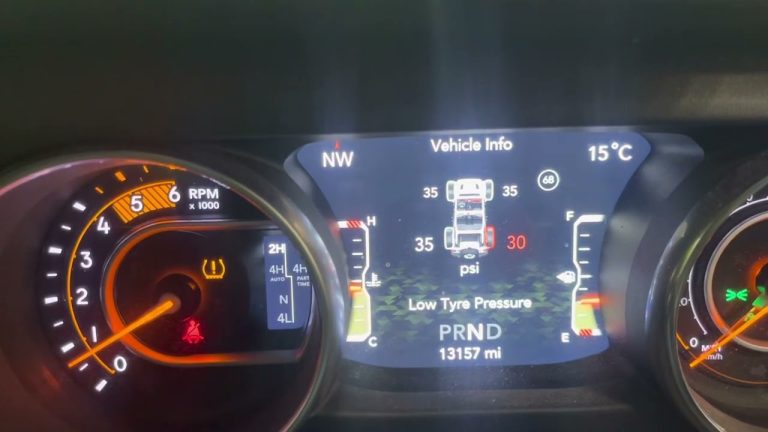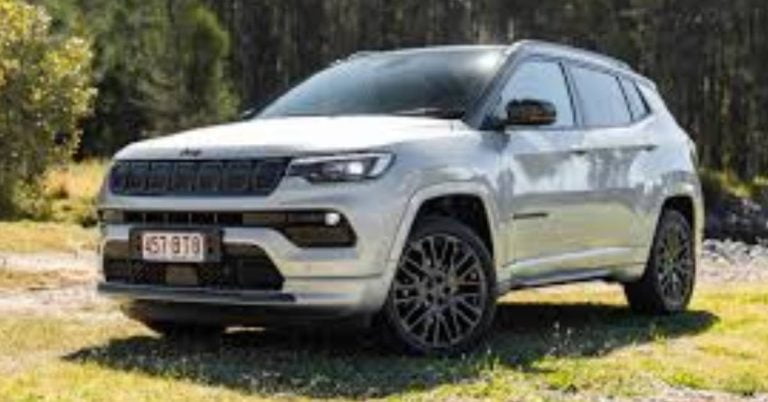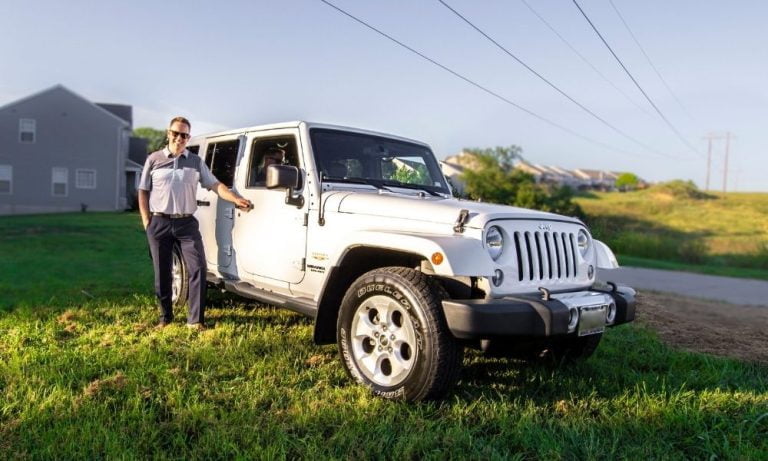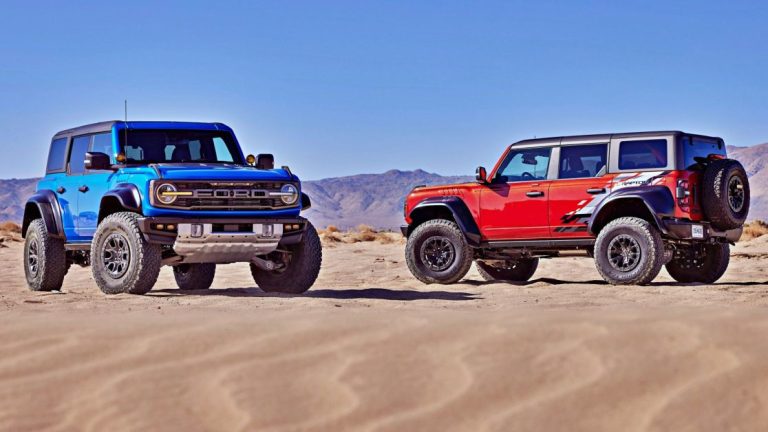What’s the Key Difference Between 4H and 4L in Jeep Wrangler?
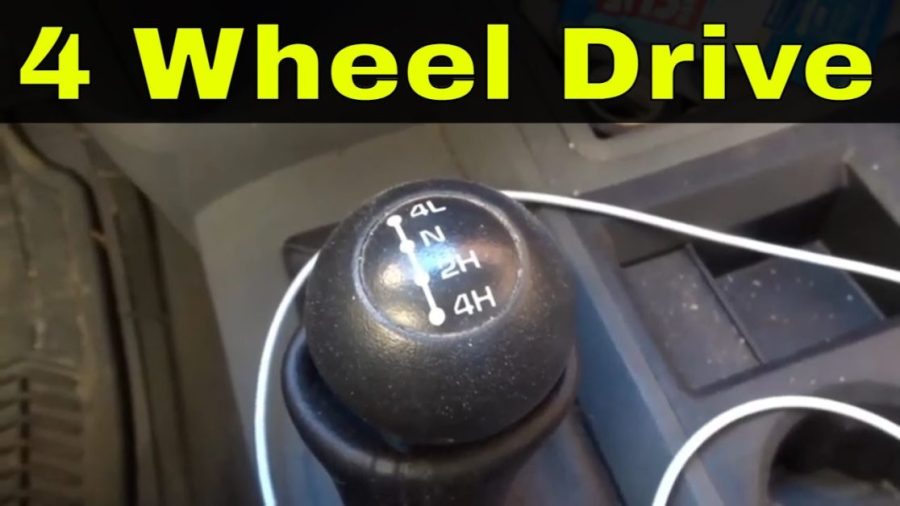
Are you an adventurous soul eager to conquer the untamed wilderness?
If so, then the world of off-roading is calling your name.
But before you embark on your thrilling escapades, let’s take a moment to unravel the mysteries of 4L and 4H, the dynamic driving modes in Jeep Wranglers.
These two modes hold the key to unlocking unparalleled control and traction on rough terrains.
Are you ready to discover the difference between the two and choose the ultimate gear for your off-road odyssey?
Let’s dive in and find out.
difference between 4h and 4l jeep wrangler
The difference between 4H and 4L in a Jeep Wrangler is the driving mode and the speed achievable in each mode.
4H (High Range) is used for high-speed off-roading, providing better fuel efficiency and smoother handling.
It is suitable for driving on hard-packed sand, ice or snow-covered roads, and dirt roads at speeds of 30 to 50 mph.
4L (Low Range), on the other hand, is specialized for controlled driving on craggy roads or when at risk of getting stuck.
It provides a significant reduction in gear ratio, giving more torque and less speed.
4L is recommended for extreme off-road conditions like steep inclines, rocky surfaces, and deep mud, with speeds of around 10 mph.
Overall, 4H is better for higher speeds and smoother performance, while 4L is ideal for tougher terrains and increased power and control.
Key Points:
- 4H is used for high-speed off-roading, while 4L is specialized for controlled driving on challenging terrains
- 4H provides better fuel efficiency and smoother handling, while 4L offers increased power and control
- 4H is suitable for driving on hard-packed sand, ice or snow-covered roads, and dirt roads at speeds of 30 to 50 mph
- 4L is recommended for extreme off-road conditions like steep inclines, rocky surfaces, and deep mud, with speeds of around 10 mph
- 4H offers a higher gear ratio, resulting in faster speeds, while 4L provides a significant reduction in gear ratio for more torque and less speed
- Overall, 4H is better for higher speeds and smoother performance, while 4L is ideal for tougher terrains and increased power and control
Check this out:
💡 Did You Know?
1. The term 4H and 4L in the context of Jeep Wranglers refer to the two different gears in the vehicle’s transfer case. However, they have nothing to do with the gears in the transmission itself.
2. The 4H mode, also known as the “Part-Time” mode, is specifically designed for driving on rough terrain, gravel, and slippery surfaces. It provides better traction and control while allowing the front and rear wheels to rotate at different speeds.
3. On the other hand, the 4L mode, also known as the “Low-Range” mode, is meant for extreme off-road conditions such as climbing steep hills, maneuvering through rocks, or traversing through deep mud. It provides maximum torque and better control over tough obstacles.
4. When engaging the 4L mode, both the front and rear wheels are locked together, ensuring that equal power is distributed to all wheels. This gives the Jeep Wrangler enhanced crawling capability, enabling it to conquer challenging off-road terrains.
5. While the 4H mode can be engaged while the vehicle is moving, the 4L mode requires the Jeep Wrangler to be at a complete stop. This is because engaging 4L while in motion can cause significant damage to the drivetrain due to the sudden change in gear ratio.
1. Introduction: 4H And 4L Driving Modes In 4-Wheel Drive Vehicles
When it comes to off-roading and tackling rough terrains, 4-wheel drive vehicles offer specific driving modes, such as 4H and 4L, to enhance their performance. These modes are specially designed to provide better control, traction, and stability in challenging conditions.
While both modes distribute power to all four wheels, there are significant differences between 4H and 4L in terms of gear ratio, speed, and their preferred terrains.
2. Difference Between 4L And 4H Modes In Terms Of Gear Ratio And Speed
The key difference between 4L and 4H modes lies in the gear ratio and speed achievable in each mode.
4L, also known as Low Range, is ideal for controlled driving on craggy roads or when there is a risk of getting stuck. It provides a significant reduction in gear ratio, giving more torque and less speed. In fact, 4L mode can provide a gear ratio as low as 2.72:1 or even lower, allowing the vehicle to navigate extreme off-road conditions like steep inclines, rocky surfaces, and deep mud.
On the other hand, 4H, also known as High Range, is a drivetrain mode that distributes power to all four wheels, providing additional traction and stability. It is particularly useful for driving on uneven or slippery surfaces or when there is a risk of getting stuck in mud or snow. Activating 4H can be done by pressing the 4H or 4HI button or turning the switch, depending on the specific vehicle model.
- 4L:
- Ideal for controlled driving on craggy roads
- Provides more torque and less speed
- Gear ratio as low as 2.72:1 or even lower
Navigates extreme off-road conditions like steep inclines, rocky surfaces, and deep mud
4H:
- Provides additional traction and stability
- Useful for driving on uneven or slippery surfaces
- Helps avoid getting stuck in mud or snow
- Activated by pressing the 4H or 4HI button or turning the switch, depending on the specific vehicle model
“The key difference between 4L and 4H modes lies in the gear ratio and speed achievable in each mode.”
3. Advantages Of Using 4L Mode For Challenging Terrains
4L mode offers significant advantages when tackling challenging terrains. When driving in deep mud or snow, soft sand, steep inclines, or extremely rocky surfaces, 4L is highly recommended. The lower gear ratio in 4L provides increased torque and power, enabling the vehicle to traverse such conditions with relative ease. The reduced speed range, typically around 10 mph, ensures better control and maneuverability in extreme off-road situations.
Additionally, 4L mode is also preferred for towing or hauling heavy loads. The increased torque and power offer better control and stability when navigating with extra weight. This makes 4L an ideal choice for off-road enthusiasts who frequently engage in towing or hauling activities.
4. Benefits Of 4H Mode For Improved Traction And Stability
While 4L mode is specialized for extreme off-road conditions, 4H mode provides its own set of benefits.
In 4H mode, vehicles can handle:
- Bumpy roads
- Slippery surfaces
With better:
- Traction
- Stability
It is particularly suitable for:
- Sand
- Mud
- Snowy terrains
Where additional traction is necessary for safe and efficient driving.
Moreover, 4H mode is also recommended for cruising at higher speeds.
It provides:
- More power to the wheels
- Quicker acceleration
- Overall better performance on rough roads
In situations where driving speed is a priority, 4H mode allows the vehicle to maintain a higher speed while still benefiting from improved traction and stability.
5. Activating 4H Mode: Buttons, Switches, And Controls
Activating 4H mode may vary depending on the vehicle model. In some vehicles, it can be done by pressing the 4H or 4HI button, while in others, it may require turning a switch. Some modern vehicles even feature electronic push-button controls for engaging different driving modes, including 4H.
Switching into 4H mode should be done when the vehicle is at a complete stop or at a low speed, as sudden shifts between modes can cause mechanical stress and potential damage to the drivetrain. It is important to refer to the vehicle’s manual for specific instructions on activating 4H mode.
6. Comparison Of 4H And 4L Modes In Various Popular Vehicles
The differences between 4H and 4L modes extend beyond one particular vehicle model. Let’s explore how these modes vary in other popular 4-wheel drive vehicles.
The Nissan Pathfinder, Toyota Land Cruiser, and Toyota 4Runner are renowned for their off-road capabilities and offer both 4H and 4L modes. In 4H mode, these vehicles excel at traversing bumpy roads, slippery surfaces, and similar terrains due to improved traction and stability. However, in extreme off-road conditions like steep inclines, rocky surfaces, and deep mud, engaging 4L mode becomes imperative. The integration of a low-range transfer case in 4L mode supplies the necessary torque and power for navigating such challenging terrain.
7. When To Use 4H Mode And Its Preferred Terrains
Knowing when to use 4H mode and its preferred terrains is crucial for optimum performance and safety. 4H mode is suitable for various terrains, including sand, mud, and snowy terrain, where additional traction is required. It is recommended for driving on hard-packed sand, ice or snow-covered roads, and dirt roads when traveling at normal speeds of 30 to 50 mph.
On the other hand, 4L mode is recommended for challenging terrains such as steep, rocky, or uneven surfaces. It is particularly useful for extreme off-road conditions, deep mud, soft sand, and when traversing steep inclines. When engaging 4L mode, speeds are typically reduced to around 10 mph to ensure better control and maneuverability.
8. Transitioning Between 4H And 4L Modes And Recommendations For Experimentation With Driving Modes
Transitioning between 4H and 4L modes in a 4-wheel drive vehicle can be done while driving, but it requires careful attention and consideration. When shifting from 4H to 4L, there may be a reduction in speed but an increase in power and torque. It is important to note that sudden shifts between modes can cause mechanical stress and potential damage to the drivetrain. Therefore, it is recommended to switch modes when the vehicle is at a complete stop or traveling at a low speed.
To gain a better understanding of the differences between 4H and 4L modes, it is suggested to experiment with all the driving modes in a controlled environment, such as a dirt road. This will provide drivers with firsthand experience of the vehicle’s behavior and performance in various situations.
Note: Careful attention and consideration are necessary when transitioning between 4H and 4L modes in a 4-wheel drive vehicle. Sudden shifts between modes can cause mechanical stress and potential damage to the drivetrain. Hence, it is recommended to switch modes when the vehicle is at a complete stop or at a low speed.
In conclusion, the difference between 4H and 4L modes in 4-wheel drive vehicles, like the Jeep Wrangler Rubicon and the Toyota Land Cruiser, lies in the gear ratio, speed, and preferred terrains.
- 4L mode provides more torque and power, making it ideal for extreme off-road conditions and towing heavy loads.
- On the other hand, 4H mode offers improved traction and stability, making it suitable for bumpy roads, slippery surfaces, and high-speed off-road situations.
Understanding the capabilities of these modes and knowing when to use them is crucial for maximizing the performance and safety of 4-wheel drive vehicles.
FAQ
Should I drive in 2H 4H or 4L?
When it comes to deciding which drive mode to use, it largely depends on the current road conditions you are facing. If you are driving on normal dry or wet roads, 2H would be the suitable option for day-to-day driving. However, if you encounter roads with questionable traction like dirt, snow, or mud, it would be advisable to switch to either 4H or 4L. While both provide increased traction, 4L restricts your speed compared to 4H, making it unsuitable for highway driving. So, consider the road conditions and your required speed limitations to determine the suitable drive mode for your journey.
What is the difference between 4 high and 4 low Jeep Wrangler?
The main difference between 4 high and 4 low Jeep Wrangler lies in their purpose and capabilities. While both are intended for off-road conditions, 4 high is designed for loose and slippery road surfaces such as gravel, mud, and sand. It provides increased traction and better control in these conditions, allowing the Jeep Wrangler to navigate challenging terrains more easily.
On the other hand, 4 low is meant for more extreme off-roading situations. It offers even more torque and power to the wheels, enhancing the Jeep’s capability to climb steep inclines or traverse rocky terrains. 4 low is particularly useful in scenarios where maximum traction and slow-speed control are required, such as when crawling over large obstacles or maneuvering through deep water crossings. Consequently, using either 4H or 4L on hard-surfaced roads can lead to increased tire wear and potential damage to the driveline components due to the excessive strain imposed.
Is 4H or 4L better for rain?
In rainy conditions, 4L, or 4 Low, is generally better than 4H, or 4 High. While 4H optimizes traction at the cost of power, 4L provides even more traction and control by delivering maximum torque to all four wheels. This can be especially beneficial in rain, as it helps prevent wheel slippage and allows for better maneuverability, particularly in off-road situations or when encountering deep puddles or muddy terrain. By engaging 4L, you can enhance your vehicle’s stability and minimize the risk of losing control on slippery surfaces.
What does 4H mean on a Jeep Wrangler?
The 4H on a Jeep Wrangler signifies the four-wheel-drive high range mode. This mode is especially useful in situations where additional traction and stability are required, such as driving on slippery or uneven terrain. With 4H engaged, power is distributed to all four wheels, allowing the Jeep Wrangler to better handle challenging off-road conditions while still maintaining higher speeds on regular road surfaces.

